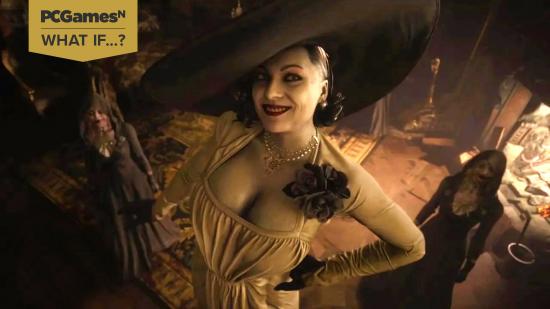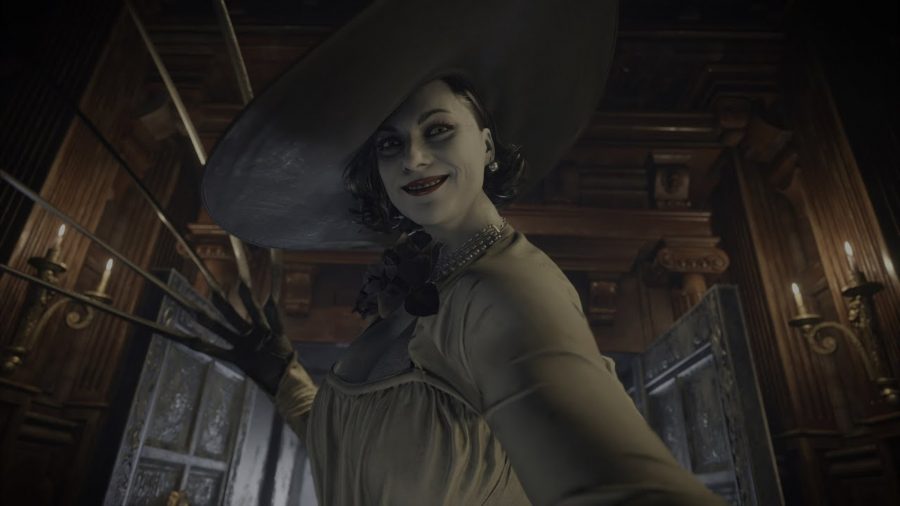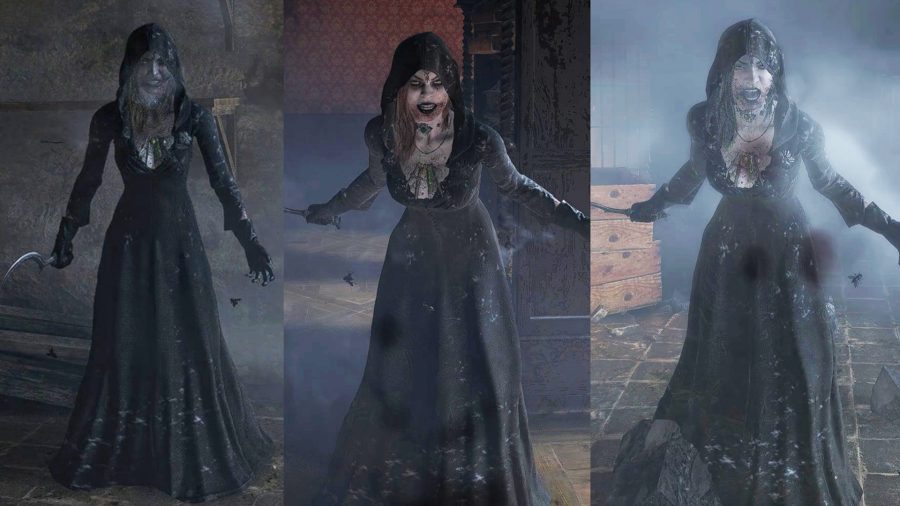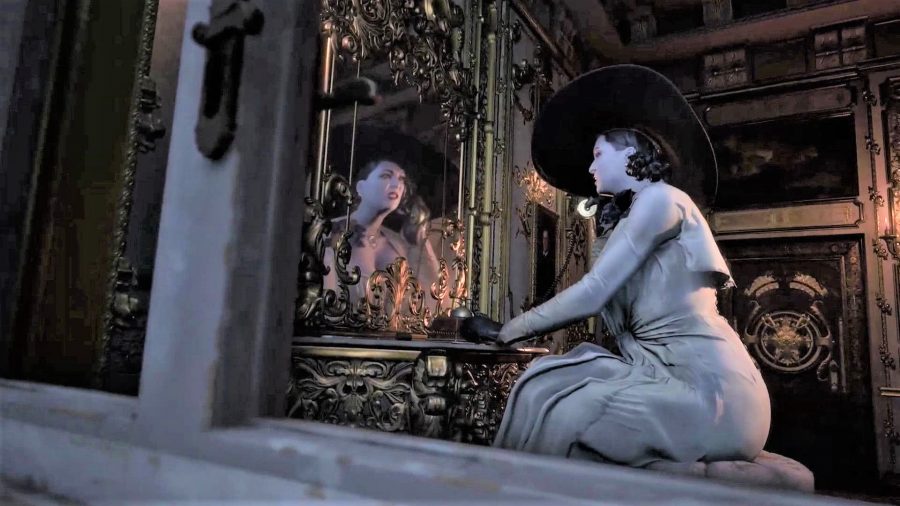Depending on how you look at it, Resident Evil Village is either a tightly paced anthology, or three promising but frustratingly underdeveloped horror stories. And also Heisenberg for some reason.
I’d like to see these characters given some breathing room. While the tragedy of scarred dollmaker Donna Beneviento and the anguish of Oedipal frogspawn Moreau would make fine extended tales in their own right, what if Capcom decided it liked money (wild, I know), and gave Lady Dimitrescu the spotlight for its next release?
If you just felt a knock to the head, please ignore the Shiba Inu with the large bat standing next to you, and focus. Why do this? Because Lady Dimitrescu is the star of Resident Evil Village. Capcom, knowing this, turned fifteen minutes of scripted screen time into an entire marketing campaign. The themes of depraved aristocrats, gothic grandeur, and the bloodlines of nobility being held in higher regard than the lives of the poor are all amazingly fertile ground for sinister storytelling, and Village’s ghost train narrative rattled through the castle before we’d even had a chance to admire the decor.
Like all great tragic characters, Lady Dimitrescu has a fatal flaw: an obsession with youth and beauty spurred by her porphyria – a genetic disease that even Umbrella Virus-progenitor Cadou was unable to cure – which compels her to embark on a decades-long claret tasting tour of the local village. Neat aside: porphyria – a real disease – was historically credited as a factor of both vampire and werewolf myths.
This sets up the parallels between Lady Dimitrescu and Elizabeth Bathory, the 16th century Hungarian noblewoman sometimes credited with being one of history’s most prolific serial killers, and potentially one of the inspirations for Bram Stoker’s Dracula, along with that loveable pioneer of the Outback Steakhouse Vlad the Impaler. Bathory herself is believed to have tortured and killed several hundred young girls, bathing in their blood to retain her youth. We can even find a blood tub in Castle Dimitrescu’s ‘Hall of Ablution’.
Tempted? Buy Resident Evil Village here
There are a couple more tropes thrown in for good measure here. The Japanese Hachishaku-sama (an eight-foot tall child-snatching yokai) is a clear inspiration. Less definitive, though certainly interesting, is an opera by Baroque composer Handel called ‘Alcina’ – Lady D’s first name. In the opera, the titular Alcina was a seductive sorceress who transformed men into stones, animals, and plants once she grew bored of them.
These strong concepts, character design, and an instantly iconic performance come together to make Lady D a scene stealer, but the Dimitrescu family’s most interesting lore comes from their frightening relationship with the village itself. It’s suggested that the family treated the place like their own personal minifridge, maintaining a delusional aura of refined authority through a reign of oppressive fear. There’s a delicious irony, in fact, that Lady D’s apparent inability to have natural children results in her abducting and transforming those she viewed as – figuratively and literally – beneath her, as the only solution for extending her storied bloodline.
So, here’s the pitch. You don’t play as one character, but three. Namely, the denizens of the village who would later become the Dimitrescu daughter-shaped bug swarms: Bella, Daniella, and Cassandra. We find out that these names were chosen for the girls after their transformation, and there’s such symbolic power in names that this feels to me like a suggestion of a complete personal history, erased and rewritten.
Three separate stories also means three separate skillsets. Maybe Bella was a Master of Unlocking? Maybe Cassandra knows how to mix grenade launcher freeze rounds for some reason? A redesigned castle with puzzles that require you to switch between characters with different abilities is an excellent way to implement some classic Resident Evil systems.
Resi fans, myself included, love to make the exact same joke about the architects that designed the series’ batshit locales: police stations with vending machines that require you to collect three Macedonian statues of sheep before you can get a Mars Bar, and so on. There’s a trick here, too, though. The castle acting as a puzzle-filled gauntlet makes sense, as Lady D would naturally want to test the mortals she’s hoping to welcome to the family. This set-up would cast her not as a boss or pursuer, but an ever-present tormentor, goading and tailing her potential daughters as they attempt to escape an impossibly convoluted, dangerous space. Maybe have those fancy phones all over the place for D to call and berate you on, to get over the Far Cry problem of having your charismatic villain disappear for most of the game.
What’s the verdict? Here’s our Resident Evil Village review
What excites me most about this idea is the promise of an expanded sense of place and history that’s currently only hinted at. Let me know what the daughters’ lives were like in the village beforehand. Were their real families distraught at their abduction, or did they willingly offer them up to Lady D out of some twisted reverence? What about D herself: does she ever regret her transformation? Why, despite her power, does she still crave acceptance from Mother Miranda? Who makes her hats? I will accept payment for this idea in the form of one life-sized cardboard cutout of Lady Dimitrescu. For science, you understand.
‘What if?’ is PCGamesN’s new regular feature series. Check back every Saturday for more hypotheticals, from thoughtful speculation about actually-plausible industry developments, to dream crossovers, to nonsense like Half-Life 3 happening.



